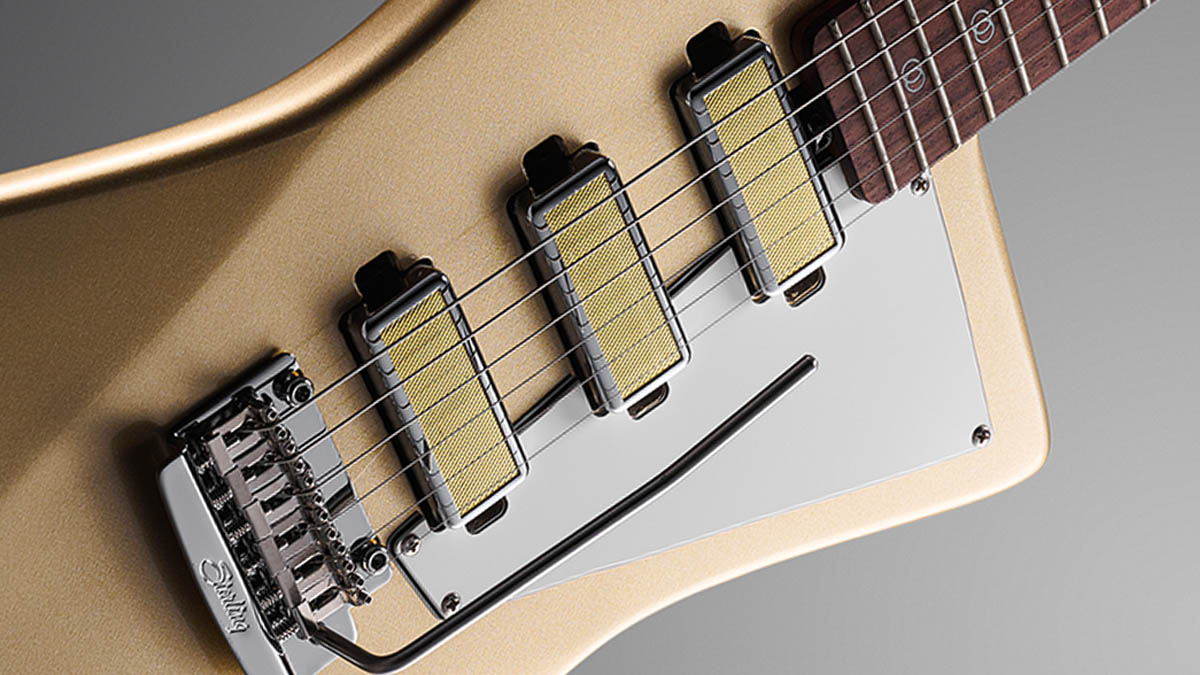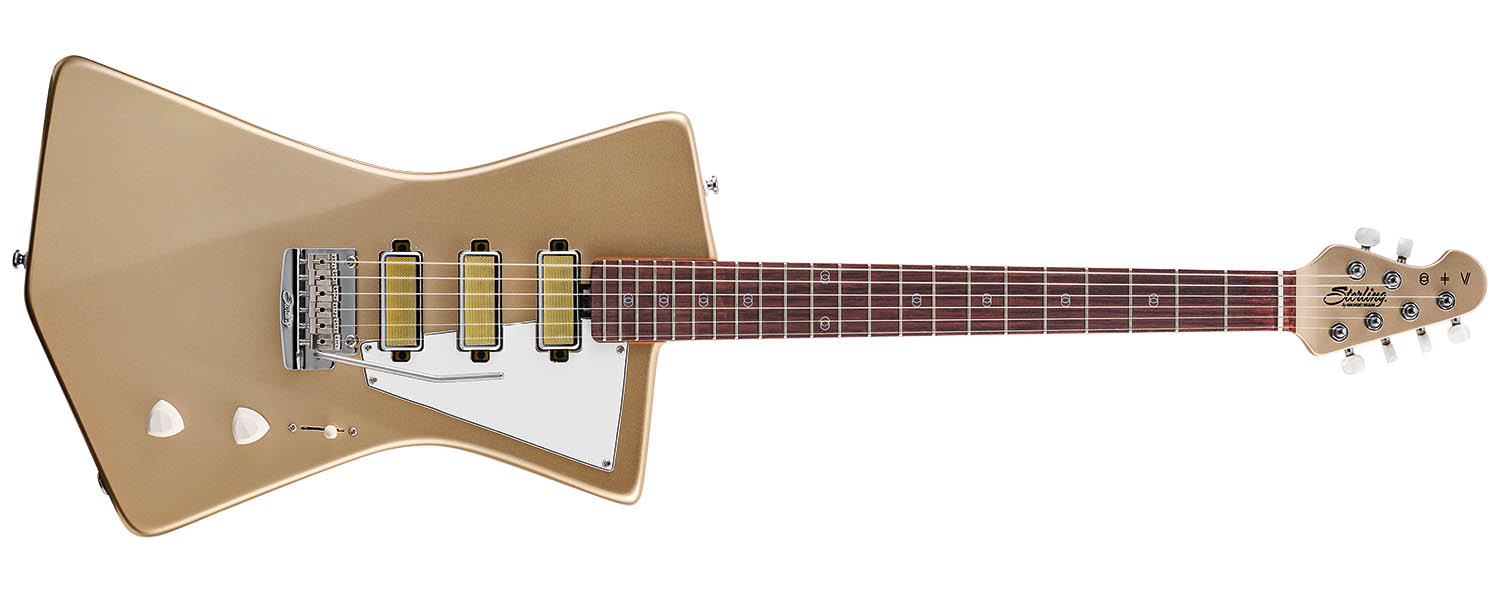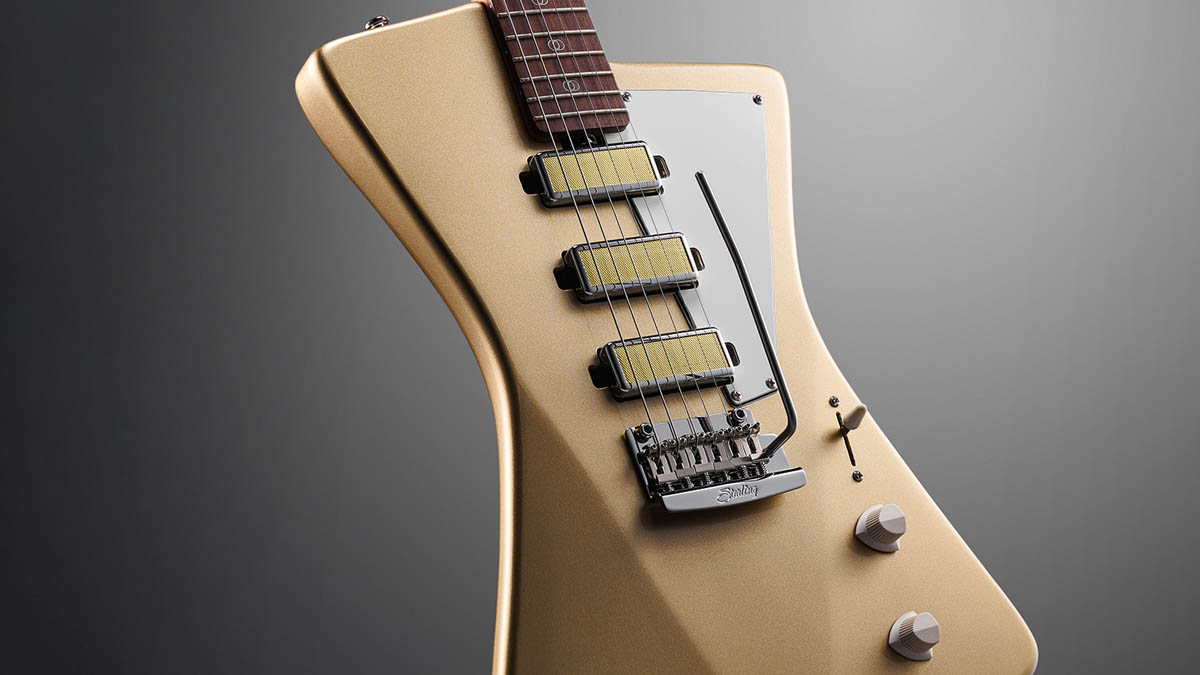Guitar World Verdict
An aesthetic and tonal antidote to traditional guitar designs, the Sterling Goldie is an ergonomic and inspiring breath of fresh air – and one that compares favorably to its more expensive Ernie Ball Music Man incarnation.
Pros
- +
The neck is a breeze to navigate.
- +
A seriously powerful and versatile tone machine.
- +
Radical but comfortable design.
Cons
- -
Middle pickup might get in the way for some players.
You can trust Guitar World
In 2016, Ernie Ball Music Man unveiled a guitar unlike anything else on the market – one so radical it’s often cited as one of the most exciting guitar innovations of recent memory.
That was the St. Vincent signature guitar, masterminded by Annie Clark [aka St. Vincent herself] and debuting a new body shape. A more affordable version arrived from Sterling by Music Man soon after, but when an updated $3,000-priced Goldie was released in 2021, guitarists began to dream once again.
Enter the equally radical but comfortably more affordable Sterling by Music Man Goldie, which – at least on the surface – carries all the aesthetic flair and tonal appointments of its pricier sibling…
There are some tweaks worth stating for the record. Here, nyatoh has been used for the body rather than okoume, and the premium tremolo of the original has been swapped out for a standard alternative.
A roasted maple neck returns, though it’s topped with a rosewood, rather than ebony, fingerboard. So, a fairly sizeable shake-up, but not one that has compromised the instrument’s performance. In fact, those comparisons are almost unfair: this is a smashing guitar in its own right.

It’s always strange getting to grips with an unfamiliar guitar shape, but the Goldie somehow doesn’t feel unfamiliar. It’s very narrow, but the contours make it a pleasing playing companion that doesn’t feel brittle balancing on your knee.
Owing to the nyatoh, the Goldie is light and has a nice snappiness. Pair that with an impeccably profiled neck and 12”-radius ’board, and you’ve got all the ingredients for an exceptional contemporary instrument.
It’s a fun little thing to noodle with unplugged, but, of course, its potential is capped without an amplifier. Indeed, if the guitar itself feels like lightning in a bottle; that electricity is unleashed when plugged in. Gold foil pickups have been a bit of a ‘thing’ recently, but these are certainly here on merit.

It becomes a different animal with a little fuzz, and anyone familiar with St. Vincent’s repertoire – or gold foils in general – will be well prepared for this trio. The cleans are nice, too, and the five-way switch offers an array of chime-y and sludgy sounds, but this guitar really sings with a little overdrive.
As with all three-humbucker guitars, that pesky middle pickup can get in the way of strumming – and here, that 2/4 tuner design might not be for everyone – but that comes with the territory. To summarise: stick the EBMM logo on the headstock and without a close-up inspection we’d probably be fooled. A must-try for fans of guitars that push the boundaries of instrument design.
Specs
- PRICE: $779 / £1,099
- BODY: Nyatoh
- NECK: Roasted maple
- SCALE LENGTH: 25.5”
- FINGERBOARD: Rosewood, custom St. Vincent inlays
- FRETS: 22, narrow
- PICKUPS: 3 x Gold Foil mini humbuckers
- CONTROLS: 5-way pickup selector, master volume, master tone
- HARDWARE: Vintage tremolo, locking tuners
- FINISH: Cashmere, Velveteen
- CONTACT: Sterling by Music Man

Matt is the GuitarWorld.com News Editor. He has a Masters in the guitar, a degree in history, and has spent the last 16 years playing everything from blues and jazz to indie and pop. When he’s not combining his passion for writing and music during his day job, Matt records for a number of UK-based bands and songwriters as a session musician.
“It combines unique aesthetics with modern playability and impressive tone, creating a Firebird unlike any I’ve had the pleasure of playing before”: Gibson Firebird Platypus review
“This would make for the perfect first guitar for any style of player whether they’re trying to imitate John Mayer or John Petrucci”: Mooer MSC10 Pro review











